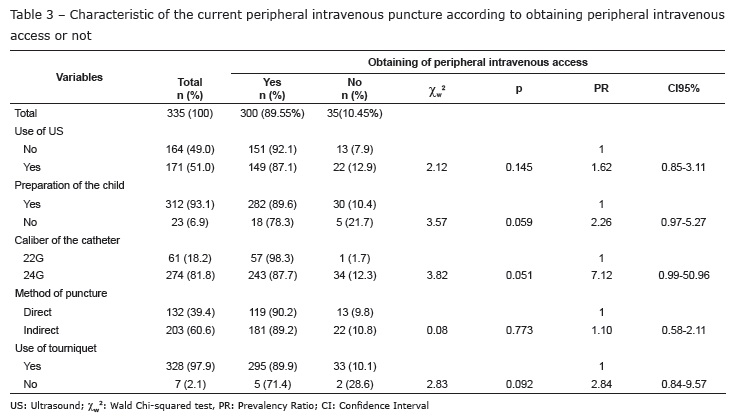OBJECTIVE: To identify predisposing factors for peripheral intravenous puncture failure in children. METHODS: Cross-sectional cohort study conducted with 335 children in a pediatric ward of a university hospital after approval of the ethics committee. The Wald Chi-squared, Prevalence Ratio (PR) and backward procedure (p≤0.05) tests were applied. RESULTS: Success of peripheral intravenous puncture was obtained in 300 (89.5%) children and failure in 35 (10.4%). The failure rates were significantly influenced by: presence of clinical history of difficult venous access, malnourishment, previous use of peripherally inserted central venous catheter, previous use of central venous catheter, and history of phlebitis or infiltration. In the multivariate model, being malnourished and having previously been submitted to central venous catheterization were the predisposing factors for the failure. CONCLUSION: The failure rate of 10.4% is similar to that identified in analogous studies and was influenced by characteristics of the children and intravenous therapy. In association with this, malnutrition and previous use of a central venous catheter were the most important variables influencing increase in peripheral intravenous puncture failure.
Pediatric Nursing; Peripheral Catheterization; Patient Safety; Pediatrics




